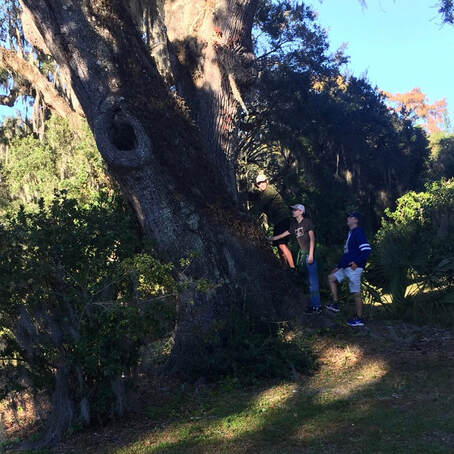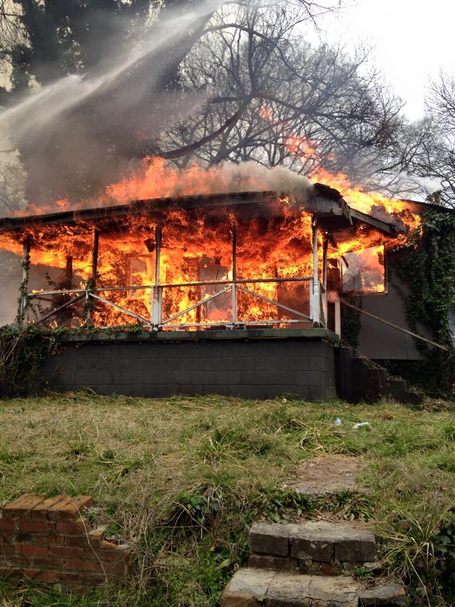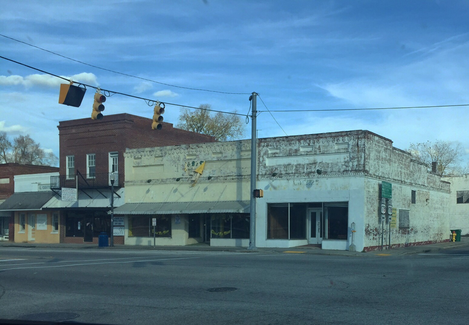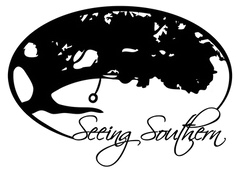 Curator Sam Burnham “We must learn to grow like a tree, not like a fire.” Those words jumped off the page at me as I was reading Wendell Berry’s assessment of the economic mindset of modern America. It is a brilliant, perhaps even perfect analogy that not only highlights the direness of the situation but also the urgency that demands our response. Let’s take a look at the analogy: Down in the low country of Georgia and South Carolina massive live oaks stand where they stood before Columbus sailed in search of trade routes. Their roots grasp deep into the fertile ground with a complex network that serves not only as a strong foundation but also as a siphon for water and nutrients. The large trunk separates into hundreds, perhaps thousands, of branches and then sprouts leaves that turn sunlight and water into food. The tree is home to moss, bugs, birds, frogs, and who knows what all else. These trees stood before our great-grandparents were born and they’ll likely be standing when our great grandchildren die. They’ve survived hurricanes, tornadoes, floods, and man. It has been a slow a steady process from whatever conveyance placed an acorn in that spot to the mighty behemoth that stands today but it has been steady, reliable, dependable.  On the other hand, a fire moves fast. A fire in a house can easily spread. A flashover can engulf an entire room in seconds. It destroys everything it encounters, breaking matter down on a molecular level and turning a house into soot, smoke, and ash. As it grows, it consumes the very fuel that gives it life. The more fuel present, the more potential for growth. The more growth achieved, the less fuel available. Once the fuel is gone the fire will falter, fall into decay, and then wither away with a whimper. It’s impressive, it’s rapid, it’s powerful, but it’s not remotely sustainable. Whereas a live oak could stand for a millennium, a house can burn to ash in a matter of an hour, if that. So we look at this analogy on an economic level. A sustainable growth model would have a complex root system. Reliable, various, and diverse sources of income and asset growth would abound. The model would bring in more beneficiaries as it grows. Just as bugs, and birds, and frogs find solace in the tree branches. Businesses in cities and towns would make things, sell things, fix things. Stores would sell fresh food, likely grown nearby in the rural area. People would own their homes and property. Cities would obviously still have more options and options that aren’t available in smaller locations but towns would have a local economy. Boarded up main streets would be a rarity, not the norm. The economy would perform well everywhere. That is tree-like growth. With the fire model, you see explosive growth. The stock markets set records, large corporations experience record growth. But we are already seeing vast swaths of the country that have been consumed by the economy. Rural towns that once had 10, 15, 25 businesses - stores, restaurants, repair shops, doctors offices, etc - now sit void of anything, save perhaps a gas station that also sells a few food items. Often these towns are “food deserts,” with no place to buy fresh food within five, 10, perhaps even 25 miles. Here we find the irony of people suffering malnutrition while living on arable land. Basic services are found in the cities, not locally. Under the fire model, commerce has fled to the city. It often takes the next generation of townspeople with it as the young follow opportunity. As the cities thrive they might stop to ponder ideas of how to help the suffering rural areas but they don’t ponder it long. What goes unnoticed is that the city infrastructure is beginning to crumble. Streets and bridges are wearing out. Older neighborhoods are falling into disrepair. You can only add so many lanes to a highway and the more you add, the more you need. Politicians might slap a fancy stadium bandage on it but the fire model economy doesn’t care. It’s burning hot in the fuel rich city but as rents rise, wages fall, companies downsize, and the tax coffers dry up, that fire begins to want for fuel. But there isn’t any more. Automation replaces people. People without jobs don’t have money to buy the wares automation produces. You can raise the minimum wage all you want but once a person is replaced by a machine, the minimum wage is irrelevant. The fuel the fire model economy consumes is people. People are only seen as resources. They are slots in a schedule and the fewer you need, the better. Customers are just money. Relationships are irrelevant. And if we can move the whole operation to another town, another state, another country to make more money, then lock the doors and let’s go. Companies with a vested interest in the community will not do this. Not ever. Never. Not once. But a company that only came to town for the incentive package offered to them will drop your town like a hot potato just as soon as a better offer pops up. Once the fuel is gone, the fire economy goes out. And that is the end.  Maybe we still have time to change models, maybe we don’t. I have no specific insight to judge that one with any certainty. But I do know this, a healthy economy is healthy in more places than just in the city. A healthy economy meshes the urban, the suburban, and the rural together and they all share the same integrated relationships we see in the tree. We saw this model work, to varying degrees of success, in America from the founding fathers up until World War II. An honest look will reveal that the change was explosive, the fire took hold quickly and burned hot. It has already consumed most of this country. The rural areas are mostly spent. The inner cities of our huge metropolitan areas aren’t faring much better. The suburban areas and wealthy neighborhoods in the cities are still burning pretty hot. But it isn’t sustainable. We cannot trust the government to fix this for us. Big business and big government are two heads of the same monster and it doesn’t matter which party is in charge. Washington is too far away, too disconnected, and too invested in the fire model to be of any use. No, we have to fix this ourselves. Our only hope is to see ourselves as customers rather than consumers (like the fire). We have to be responsible about our purchasing habits. We have to make decisions that are healthy for our local, state, and regional economies. We need businesses that have a sense of place, an understanding of home, of people, of relationships. Do business with your neighbors. Encourage the type of economy that digs its roots deep into the local soil rather than just scorching the earth on its way through. This model of the tree fits so many of the problems we face today - economics, politics, education, culture. But for today think on the economic ramifications. The government isn’t going to fix it. Big business isn’t going to fix it. If it is going to be fixed, it will be average folks who care about their homes, neighborhoods, and neighbors. It will be customers, not consumers, citizens, not taxpayers.
0 Comments
Leave a Reply. |
Sam B.Historian, self-proclaimed gentleman, agrarian-at-heart, & curator extraordinaire Social MediaCategories
All
Archives
November 2022
|




 RSS Feed
RSS Feed
